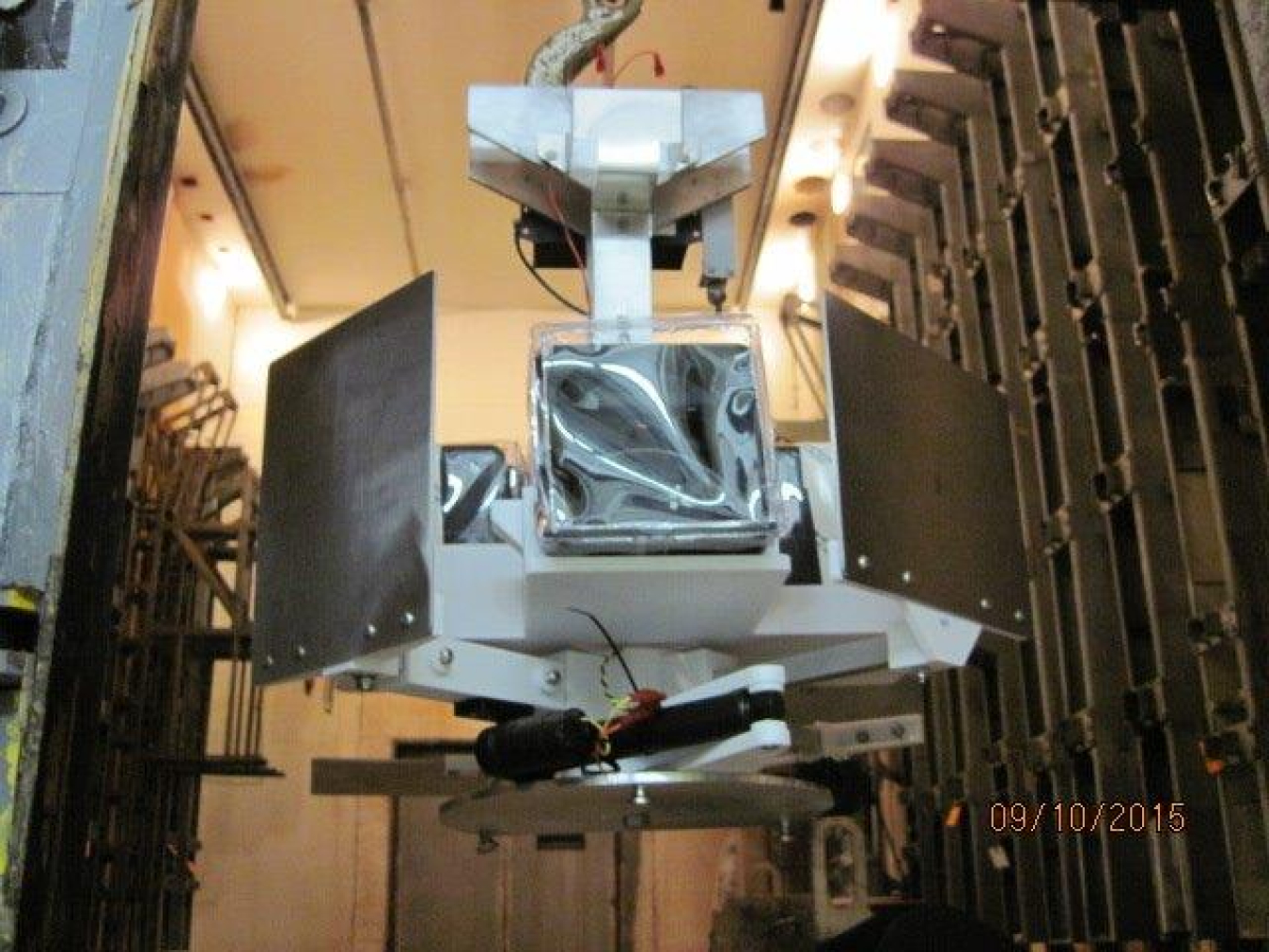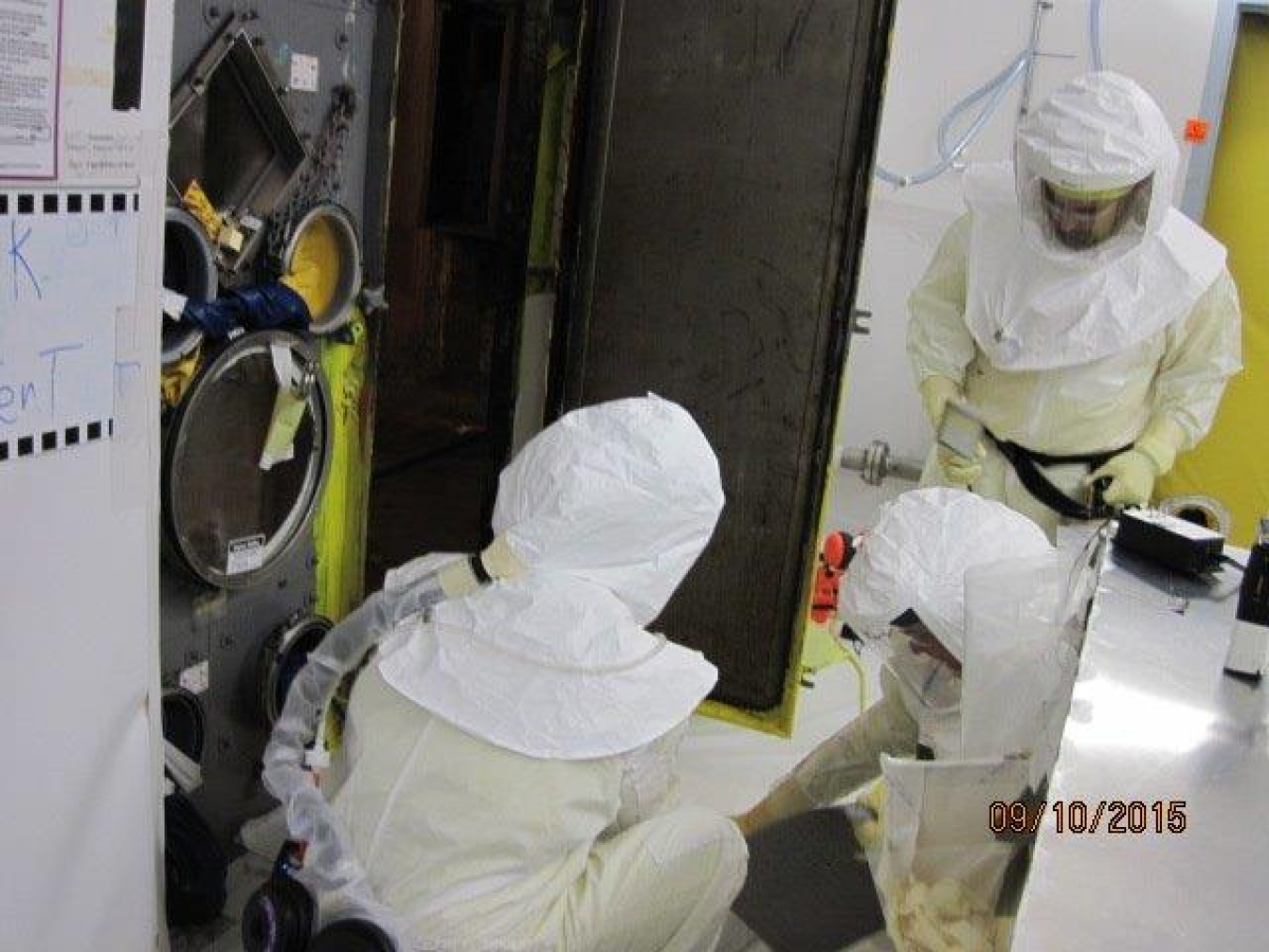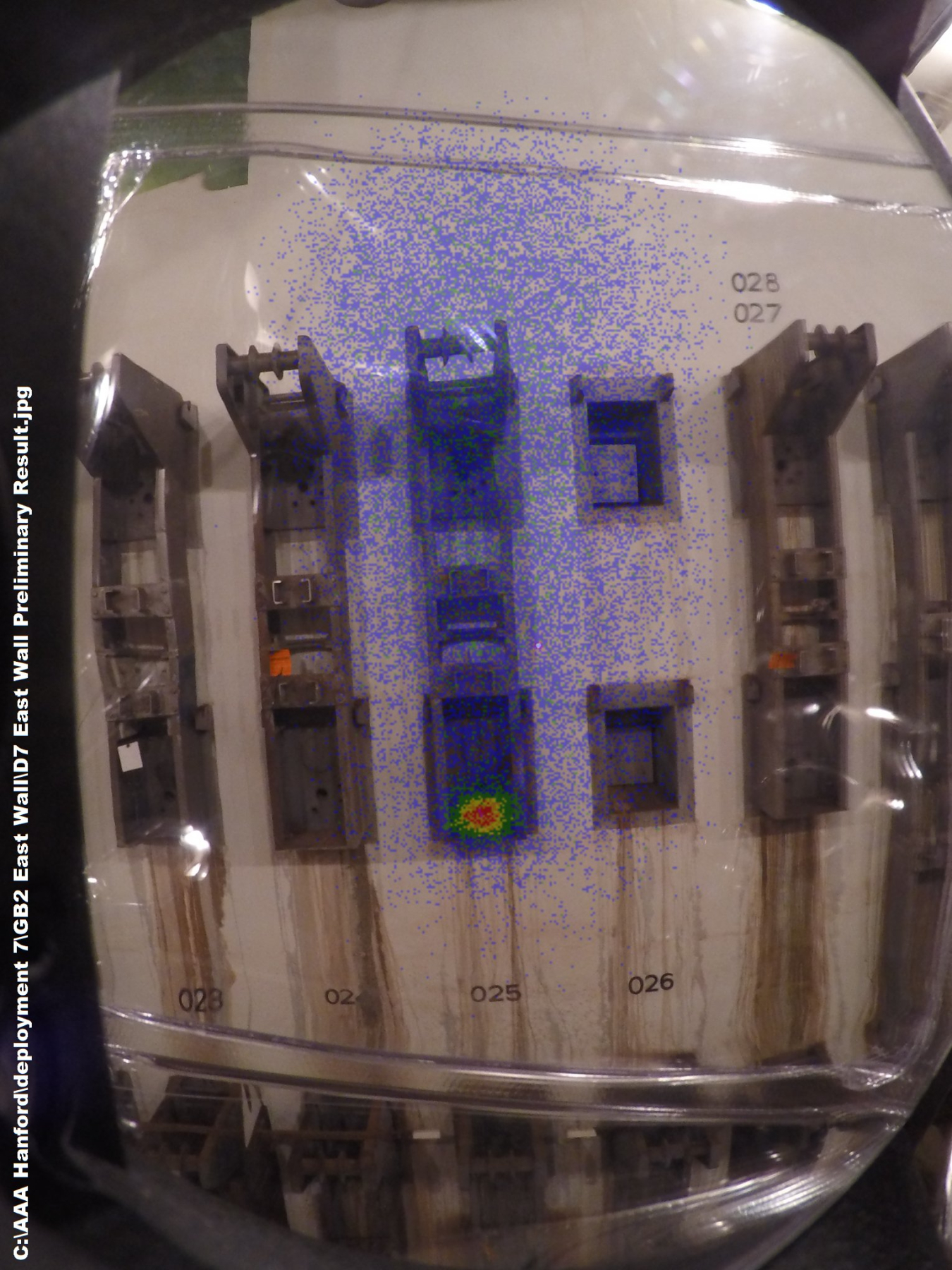RICHLAND, Wash. – Work crews are nearly done preparing for the Plutonium Finishing Plant (PFP) demolition, a major remediation project that reduc...
January 14, 2016Employees cut apart a two-stories-high glove box from the top down so they can remove the structure piece by piece from the facility.

The GrayQb hangs from a crane inside the PRF canyon. Made of a custom tungsten shield, digital camera, and a radiosensitive phosphor storage plate, the device contains no radiological source and does not require a power source to operate, making it less expensive and more flexible than traditional detection technologies.

Workers gather at the PRF canyon door during the deployment of the radiation mapping device.

The yellow, orange, and red in this image shows a concentration of radiological contamination on a structure used for hanging pencil tanks. It also shows the wall in this location is uniformly contaminated and that the staining does not contain concentrated amounts of contamination.
RICHLAND, Wash. – Work crews are nearly done preparing for the Plutonium Finishing Plant (PFP) demolition, a major remediation project that reduces risk to human health and the environment and lowers lifecycle costs for the Hanford Site.
One of the last tasks before demolition is decontaminating the Plutonium Reclamation Facility (PRF) canyon, which supported recovery of plutonium from waste produced at Hanford and other weapons production sites. The canyon once held 52 pencil-shaped tanks, the last of which was removed in April 2015. Leaks and spills throughout the facility’s operating life left the canyon contaminated with radiological and chemical hazards.
Hanford contractor CH2M HILL Plateau Remediation Company (CH2M) and EM’s Savannah River National Laboratory (SRNL) collaborated to bring in technology to help focus decontamination efforts inside the large canyon. In September, the team deployed the GrayQb (pronounced Gray Cube) gamma radiation mapping device in the canyon. Because radioactive contamination cannot always be seen, the device gives clear vision to cleanup efforts, taking pictures that help locate contamination hot spots.
Four of the devices were mounted on a crane platform and transported to 10 locations for analysis at various elevations. Floors, walls, and ceilings were examined, and the data was collected to deploy decontamination workers to hotspots that need attention.
“In this field trial, the GrayQb proved to be a very useful tool in pinpointing contamination concerns,” SRNL Senior Technical Advisor Mike Serrato said. “This translates to a safer decontamination process and more efficient operation. This technology developed at SRNL can provide almost immediate information to researchers to more accurately quantify the radiological environment, and do so at a reduced cost and reduced risk to workers.”
Along with cleaning the PRF canyon, crews have been cutting up and removing from PFP the last of two large, hazardous glove boxes. The final glove box is approximately two stories high and contains high levels of radiological contamination requiring workers to dress in pressurized suits adapted from the Idaho Cleanup Project and use supplied air to perform the work. Workers anticipate removing this glove box in the first quarter of this year.
“Crews are working on the last and one of the toughest glove boxes in the plant in terms of hazards, including chemical and radiological contamination,” EM Richland Operations Office Federal Project Director Tom Teynor said. “Our goal is safe, steady progress toward having the plant ready for demolition to start this spring.”
Crews are removing contaminated ventilation ducting and preparing the outside of the facility for demolition equipment and demolition debris load-out zones.
“The collaboration across the EM complex through lessons learned, technology, and teamwork is a testament to the importance of this major risk reduction,” said PFP Closure Project Vice President Mike Swartz. “We have the right teams, the right tools, and we will ensure the project continues with safety and compliance as the ultimate goal.”
PFP was the last stop of plutonium production at Hanford. Plutonium “buttons” made at PFP were shipped to other sites in the nation for weapons fabrication during the Cold War.
Demolition of PFP will remove a significant safety hazard, and is expected to start in March, with the goal of demolishing the entire complex in approximately six months.

